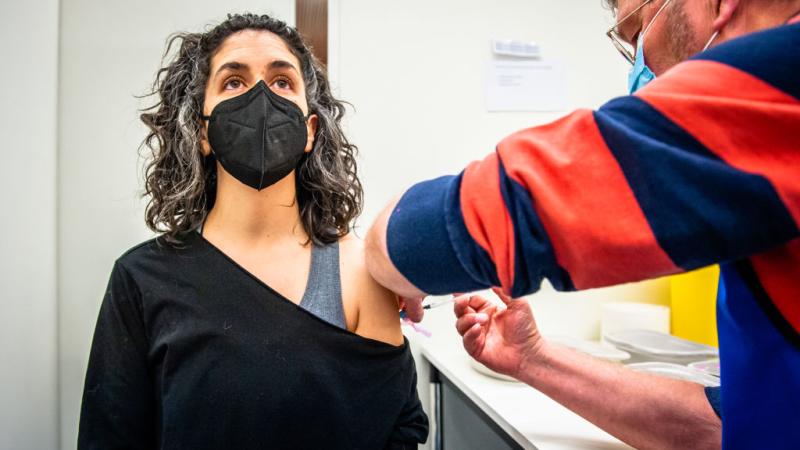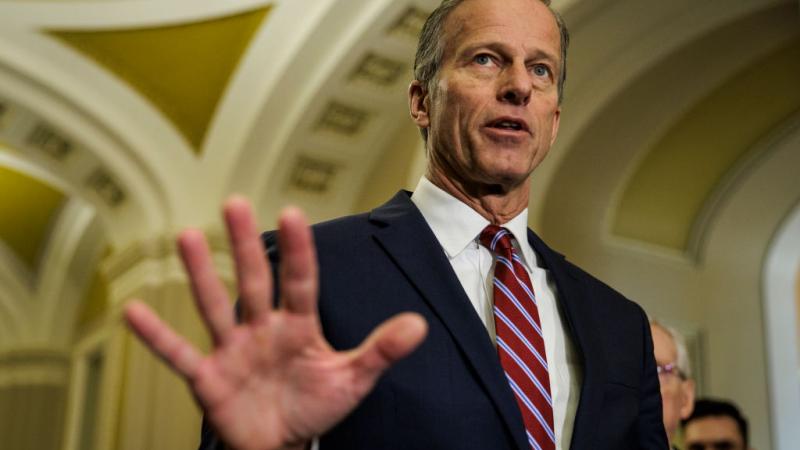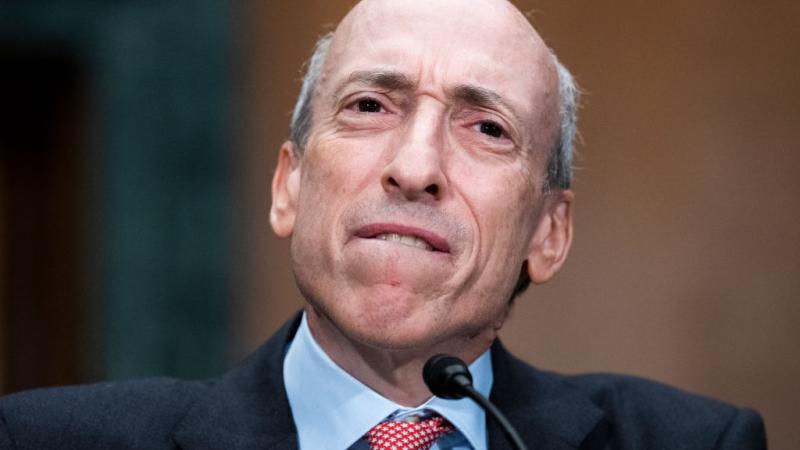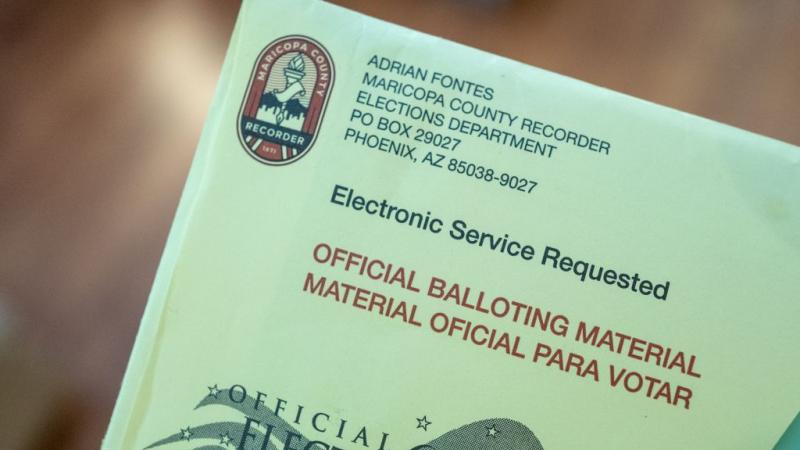Fears of coronavirus 'hotspots' overwhelming healthcare systems are overblown, data shows
CDC director: 'There are still outbreaks, but we have a better capacity to handle them.'
Growing fears that new coronavirus "hotspots" around the country could overwhelm local healthcare systems are belied, at least for now, by encouraging data that indicate hospitals are well-prepared to cope with new increases in COVID-19 patients.
Significant attention has been paid in recent weeks to numerous states such as Arizona, Texas, Florida and others, as those states' health departments record increasing numbers of coronavirus cases as well as, in some cases, notable upticks in COVID-19 hospitalizations.
Numerous states began reopening their shuttered economies in May, leading to concerns that they were rushing too quickly to resume a semblance of everyday life after months of government-mandated lockdowns. Global fears of the coronavirus overwhelming local healthcare providers have persisted since March of this year, when the world watched part of the Italian healthcare system nearly break under the strain of a massive, widespread coronavirus outbreak.
Critics are pointing to rising infection and hospital admittance numbers in several of those states as a sign that those concerns were well-founded. But a closer look at the data suggest that hospitals around the country are far more ready to deal with surges in coronavirus patients than they were earlier in the pandemic.
Arizona has surge capacity, declining deaths
Of all the states experiencing a rise in coronavirus cases, Arizona has what appears on its face to be the most concerning metrics. The Arizona health department's website says that 83% of intensive care beds throughout the state are in use; meanwhile, 85% of its general inpatient beds are full.
Those numbers have been steadily rising since March, as have the number of daily confirmed COVID-19 cases in the state, which hit a record last week. The number of COVID-19 patients in hospitals was also at an all-time high of 1,582 as of Tuesday, as was the number of ICU beds in use by COVID patients, at 531. Yet the state's health website doesn't tell the full story of Arizona's ability to handle increases in coronavirus hospitalizations.
In a press conference last week, Gov. Doug Ducey revealed that since the beginning of the pandemic the state has added an additional 2,600 inpatient beds, and an extra 600 ICU beds, to deal with any surge in patients. That's more than double the number of normal beds the state currently lists as available, and nearly 2.5 times more than the available ICU beds. (The state health department has acknowledged those numbers, but does not appear to have added them to the state's dashboard yet.)
Hospitalization rates in the state have been mostly flat since early April, and preliminary dashboard data from the past several weeks indicate those rates may be declining. The number of COVID-19 deaths in the state, meanwhile, appears to have peaked in early May and has been in a steady decline since then, even as cases have gone up.
Florida deaths also down, hospitalization rate flat, even as cases go up
That curious trend — of rising cases coupled with declining deaths and mostly flat hospitalization rates — is not unique to Arizona. Indeed, global data have indicated that coronavirus deaths have been dropping steadily worldwide since mid-April, even while cases have continued to steadily increase over that time.
A similar phenomenon can be observed in Florida: That state's dashboard has shown deaths declining even as cases have jumped significantly since the start of June. (The website notes that death numbers within the past two weeks may increase as they are recorded and logged in the system.) The state's hospitalization rate, meanwhile, has been mostly flat since its first initial rise throughout early April. Florida began reopening in mid-May.
The rise in cases in both Arizona and Florida is likely due at least in part to increases in testing: Gov. Ron DeSantis revealed in a Tuesday press conference that since May Florida has been averaging around 30,000 tests per day, while Arizona's dashboard shows a huge jump in tests throughout May and June compared to earlier months. (Both states have tested comparatively less of their populations than many other states, with large testing numbers occurring mostly over the past few weeks.)
At the Tuesday press conference, DeSantis gave hints as to why his state's hospital numbers are relatively favorable: The median age of known COVID-19 infections in the state, for instance, has plunged nearly 30 years since March, from 65 years old to 37 years old. Many new infections associated with outbreaks in the state are "sub-clinical," he said, meaning they don't rise to a level of clinical concern.
A younger infection demographic will inevitably lead to less COVID-19 deaths: Age has been one of the highest risk factors associated with severe coronavirus cases. (DeSantis noted that not a single Floridian under 18 has died from the disease, while the state has seen more COVID-19-related deaths for those over 90 than for those under 65.) Some scientists also believe that COVID-19 may be weakening via normal gene mutations, meaning it's more likely that an infection contracted today will be more mild than it would have been several months ago.
Texas sees gradual rise since reopening six weeks ago
Texas was among the first U.S. states to begin reopening; retail shops and restaurants began accepting customers on the first of May. The state observed modest rises in both cases and hospitalizations throughout last month; both numbers only began to increase significantly after the first of June, possibly due to Labor Day celebrations as well as a series of anti-police brutality protests that took place there following the death of Minneapolis resident George Floyd.
Texas has performed the third-highest number of tests of any state in the country, though its tests adjusted for population are lower than all but eight U.S. states. Its low testing rate has likely concealed the true extent of the outbreak there.
Yet the state still appears well-positioned to accommodate even a major surge in COVID-19 cases: As of Wednesday, it still had 13,815 inpatient hospital beds available, and nearly 1,500 ICU beds. Notably, COVID-19 patients accounted for just under 6% of the total number of hospitalizations in the state.
Acknowledging the rising hospitalization rate, state Gov. Greg Abbot on Tuesday nevertheless argued that there was "no reason right now to be alarmed," touting the state's ample hospital bed supply.
South Carolina has also been cited as a state in which the healthcare system may soon be put under significant strain. Cases there have been on a steady rise since early May.
But the state health department's website indicates that hospitals throughout the state are at largely manageable levels and have stayed mostly within the same range of 65-75% capacity for the last month.
A member of the state's COVID-19 information center said hospital capacity is at roughly normal levels outside of a pandemic.
"The percentage of hospital bed utilization for this time of year during a non-pandemic event [is] about average, as hospitals consider this time of year routine for scheduling emergent and elective surgeries," the representative said.
All told, the U.S. healthcare system overall appears to be primed to meet both nationwide and localized outbreaks of the virus, particularly compared to the situation as it was in March. No less than the director of the Centers for Disease Control and Prevention, Robert Redfield, expressed as much on Wednesday.
"We have learned a great deal about [COVID-19] and across the nation cases ... are plateauing," he tweeted. "There are still outbreaks, but we have a better capacity to handle them with early case identification, contact tracing, and isolation."















